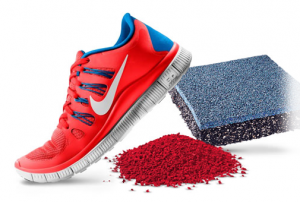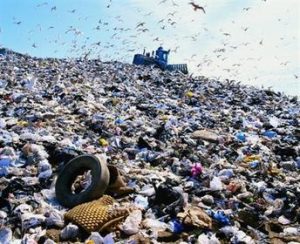After reading an assigned article on the Guardian (7) that deemed that Nike was a green giant, alongside Tesla and Whole Foods, I couldn’t help but wonder “is Nike really that green?” So I went looking, and this is what I found:
- Nike is targeting sustainability through innovation.
According to Nike’s website their environmental footprint is being reduced through efforts centred on waste, energy, water and chemistry. Impressively, they were able to divert 92% of their footwear manufacturing waste in 2015 (2). - For Nike, the key is materials.
Almost 60% of their shoe’s environmental impact is due to the materials used, and this is why material innovation has been their focus (3). - Nike launched their energy and carbon program in 2008.
By 2025, the goal is to be using 100% renewable energy in their owned and operated facilities (2). When first reading this, I was extremely impressed! I mean, it can’t get better than that, a perfect A+! Upon rereading however, I questioned the terminology “owned and operated,” and it turns out, contract factories are not included in Nike’s 100% (4).
 Overall, a significant number of positive changes have been made at Nike and are continuing to be developed in realtime. The company is focused on the footwear industry, which is logical considering they are deemed one of the most, if not the most, popular footwear brands in the world (1).
Overall, a significant number of positive changes have been made at Nike and are continuing to be developed in realtime. The company is focused on the footwear industry, which is logical considering they are deemed one of the most, if not the most, popular footwear brands in the world (1).
Although Nike’s focus is on materials, there appears to be a lack of consideration for materials post-purchase. I have worked three summers in the shoe department at Sport Check, and there were a number of shortcomings that I identified regarding Nike’s (and other brand’s) shoe packaging- generally speaking, the packaging is excessive. Additionally, there is not a concrete system in place for shoe’s “after lives.” 
Nike’s Grind technology has existed for 20 years and is used to recycle worn shoes into turf fields, tracks and 71% of their footwear and apparel products (6). Although this is impressive, I was unable to find out how Nike acquires these shoes for recycling. Do customers recycle them? Are they recovered from landfills? If majority of other shoe purchasers are also unaware of the answers to these questions, how much impact can this technology really have?
According to TheShoeIndustry.com, manufacturing is the greatest area of environmental concern regarding the lifecycle of shoes (5). This means that Nike is starting where it matters. In the future, I hope to see increased customer knowledge surrounding shoe disposal and more aggressive attempts at package reduction.
 Sources
Sources
- https://successstory.com/lists/10-most-popular-shoe-brands-263
- https://about.nike.com/pages/environmental-impact
- https://news.nike.com/news/nike-inc-and-mit-climate-colab-materials-innovation-to-combat-climate-change
- https://news.nike.com/news/sustainable-innovation
- http://theshoeindustry.weebly.com/environmental-impact.html
- http://www.nikegrind.com/faq
- https://www.theguardian.com/sustainable-business/2016/jan/02/billion-dollar-companies-sustainability-green-giants-tesla-chipotle-ikea-nike-toyota-whole-foods